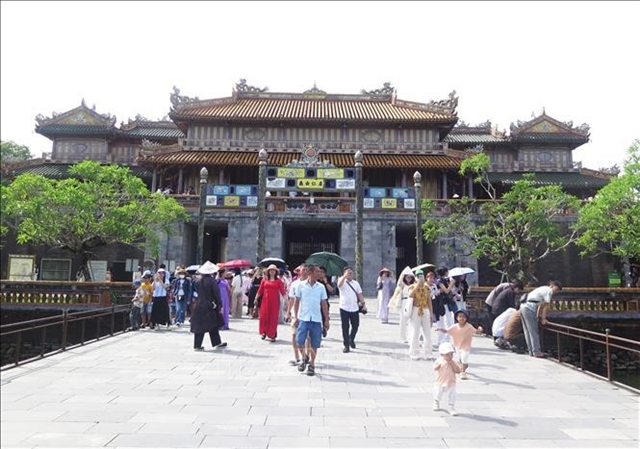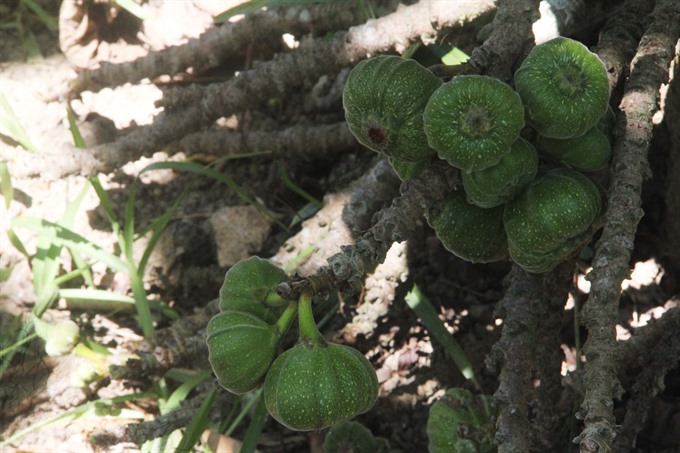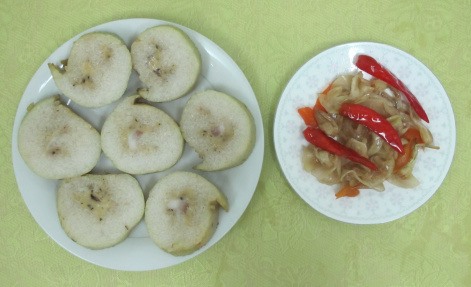 Life & Style
Life & Style

The three main regions of Việt Nam are characterized by different climate and soil conditions that result in different traditions and customs, and some of these have to do with which traditional dishes are favoured and how they are prepared when Tết, the Lunar New Year, is celebrated.
 |
| Best here: This variety of fig is believed to grow better in the central province of Thua-Thien Hue, and is an ingredient in several typical Huế dishes. — VNS Photo Phước Bửu |
by Phước Bửu
The three main regions of Việt Nam are characterized by different climate and soil conditions that result in different traditions and customs, and some of these have to do with which traditional dishes are favoured and how they are prepared when Tết, the Lunar New Year, is celebrated.
Taking the former royal capital city of Huế as representative of the central region, bánh chưng and bánh tét are the most important Tết dishes, as in other regions. The sticky rice cakes made with a stuffing of green bean and pork symbolize the wet-rice cultivation that the nation has subsisted on for centuries.
While people in the north prefer bánh chưng – square cake, Huế residents prefer bánh tét – the cylinder sticky rice cake that is said to symbolize a shoulder pole (the Centre) carrying two baskets (the North and the South) at either ends. For centuries, the bamboo shoulder poles and bamboo baskets have been the mainstay for carrying and selling things in Việt Nam.
Another difference that can be seen is that the sizes of the cakes are smaller in the central region. Huế residents like to claim that this denotes an emphasis for sophistication rather than volume, as also greater skills required to shape and wrap the smaller cakes.
Anyone who has had the bánh chưng and bánh tét in Huế, will attest to its superb taste. Two years ago, I took some Huế bánh chưng along for a trip to the Tú Làn Cave in Quảng Bình Province as a contingency provision. I ended up getting other food as my American, British, Canadian, Chinese and Vietnamese trip mates found the cakes so good that they gobbled them up to the last morsel.
Dưa món, sliced papaya, kohlrabi, carrot and onion were preserved in salt, sugar and vinegar.
While bánh chưng and bánh tét are the items that Huế inherited from ancestors who came in from the North, dưa món is a ‘endemic’ Tết dish of locals.
Dưa món is as an accompaniment to bánh chưng and bánh tét in order to enjoy a combination of different tastes - sweet, salty, fatty and spicy.
Predicting the Tết weather in Huế is a difficult task. It might be hot at above 30 Celsius degrees or be cold under 15 Celsius degrees with continuous rains for a week. With such unpredictable weather conditions, bánh tét and dưa món are the best choices for Tết food, since they can be preserved for up to 15 days, and people do not have to spend too much time in the kitchen.
For Huế residents, bánh tét and dưa món are must-have items for the Lunar New Year. Visitors to the city can try these mouthwatering dishes for a better comprehension of wet-rice cultivation culture.
Most Vietnamese men drink alcohol to celebrate Tết. And as a tradition, Huế women also prepare food for the drinkers, like slices of pig stomach and Roxburgh fig (Ficus auriculata) soaked in sweetened fish sauce. This fig preparation is a Huế specialty because the tree does not grow so well outside Thừa Thiên- Huế Province.
Southern Tết specials
Blessed with a lot of sunlight and rich soil to grow plants and vegetables all year round, the southern region enjoys an abundance of fruits, vegetables and seafood. So there is a air of unmistakable prosperity here, compared to other rural regions in the country.
Their Tết food, apart from the bánh chưng and bánh tét, are easy to cook, with some of the more popular dishes including pork cooked in coconut milk and a soup cooked with bitter gourd stuffed with mushrooms and pork.
Coconut palms can be found everywhere in the South, and bitter gourds grow in just about every garden. The fruit is called khổ qua in the south. Literally, khổ means hardships in life and qua means over. The khổ qua soup conveys the wish to overcome hardships in the coming year.
These dishes are easy to cook, taking very little time compared to the week-long preparations that Huế dishes involve. — VNS
 |
| Kitchen tribute: A Tết offering to ancestors in Huế. Photo courtesy of Hoàng Thùy |
 |
| Great combination: Slices of bánh tét served with dưa món. Photo courtesy of Trần Đức Anh Sơn |




